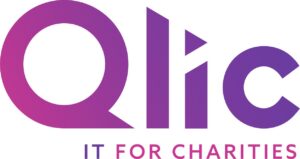
When a major cloud provider like Microsoft faces turmoil, charities can feel the tremors in ways that go beyond simply “we can’t open email”.
The recent Microsoft global outage caught many organisations off guard. When you pair it with the subsequent Amazon Web Services (AWS) outage that knocked a wide range of companies and services offline, the message is clear: charities need to treat IT outages as a fundamental risk.
This blog will walk you through the key issues: what an IT outage really is, what happened during the Microsoft outage (and the ripple effects beyond), how charities are affected in direct and less-obvious ways, lessons learned (and actionable steps), and, finally, a handy FAQ section tailored to charities.
By the end, you’ll have clear insight into how even short cloud interruptions can ripple through a charity’s operations, and importantly, what you can do to decrease risk and respond sooner when it happens.
What is an IT Outage?
An IT outage is any event that prevents key information-technology services from functioning as intended. That might mean a cloud service becomes unavailable, internal systems fail, datacentres go offline, or network connectivity is degraded. There are multiple types of outage causes: hardware failures, software bugs or misconfiguration, network or connectivity failures, cyberattacks, power failures, human error, or even third-party vendor issues.
The important thing for charities to recognise is that not all outages look the same. Some are immediate and catastrophic, others are partial (e.g. only email or only one service). Some may originate within the organisation (on-premises servers failing), and others may result from external providers (cloud services, SaaS tools).
When your systems rely on external services and cloud providers (which many charities do to achieve cost efficiencies), the risk of surging failures increases.
One service goes down → dependent services degrade → staff can’t communicate → supporters can’t respond → data is unavailable. Because rescue time might be limited, having a clear idea of what an outage is and how it plays out helps you plan.
What Happened with the Microsoft Outage: Microsoft Azure & 365 Failures Explained
Recently, Microsoft faced a significant global outage that affected its cloud services and productivity tools. A report noted: “When a company of Microsoft’s scale experiences a fault, it is not just a technical inconvenience. It is a global event.”
Here’s a breakdown of what happened:
- On 30 July 2024, the Microsoft Azure platform went through a major incident that lasted several hours, affecting multiple services, including Microsoft 365 products.
- According to the Azure services status history, Microsoft tracks such incidents via Post-Incident Reviews, which highlight core causes and impact.
- The outage’s underlying problem stemmed from a platform issue; for example, one incident noted a “platform issue in the West US region” for Azure DB and Databricks, which shows how hardware/architecture faults can trigger cloud-wide pain.
- In the most recent event (Nov 2025), several global services reported disruption, confirming the outage’s broad reach.
While Microsoft’s own status pages list affected services and recovery, what matters for a charity is the knock-on effect. The outage likely impacted Microsoft 365 (Outlook, Teams), Azure-hosted infrastructure, possibly authentication systems (Azure AD) and downstream partner applications that integrate with those services.
Charities that depend on the Microsoft ecosystem (which many do) potentially face: inability to send/receive email, Teams calls failing, cloud-hosted apps being unreachable, delays or failures in fundraising portals, supporter databases being locked out, etc.

The Direct Impact of Microsoft Outages on Charities
Charities differ from a purely commercial organisation. The mission, staff productivity, supporter trust, data integrity and often regulatory compliance all come into play. Here are the direct and less-obvious impacts of a Microsoft outage on nonprofits:
1. Communication breakdown
If your charity uses Outlook, Teams or SharePoint (via Microsoft 365), an outage can cease internal and external communications. Staff can’t access email, chat channels, or shared files. Supporters waiting for responses may face delays, harming their reputation.
2. Fundraising & supporter interaction disruption
Many charities depend on online portals, CRM systems, or donor landing pages, which may rely on Azure or Microsoft-hosted components. During an outage, donation flows may stop, appeals can’t be sent, and acknowledgements can’t be issued. For example, in forums during cloud outages, people have reported:
“We saw our Bing PPC ads had a reduction in spend that week due to the outage.”
It shows how areas such as advertising and outreach systems can be impaired.
3. Data access/programme delivery interruption
If your charity hosts programme data, beneficiary records, or case management systems in Azure, or is integrated with Microsoft tools, an outage can prevent your team from doing their work. That means service delivery could be paused, beneficiary management hampered, and reporting delayed.
4. Volunteer/staff productivity slump
Even if mission-critical systems remain untouched, staff without access to email or Teams are unable to coordinate, schedule, or plan. Inside a charity, this may mean missed deadlines, inability to collaborate, and time wasted. That’s especially painful when resources are limited.
5. Reputational and trust risk
A charity’s supporters expect responsiveness. If the organisation cannot get back to people, or if donors can’t transact, trust erodes. With charities already under pressure for transparency and accountability, the impact of an outage can expand public-facing risk.
6. Financial risk
While the charity sector may not face the same revenue loss as a commercial enterprise, the cost of recovery (overtime, IT consultancy, unplanned fixes) plus the loss of donations or grant-deliverables can be substantial. Also, service-level agreements may offer limited compensation, and the charity may lack leverage with large vendors.
7. Hidden downstream dependencies
A charity may use Microsoft for one thing (say, Outlook), but its fundraising partner might use Azure for their hosting. An outage can affect the partner and, consequently, the charity. The unified nature of cloud services means you might not even know which piece is vulnerable. As one article said: “The implementation showed our level of reliance on cloud services, which might not be all that reliable.”
An article aimed at charities noted: “While the impact on charities remains unclear … the outage seems to be mainly affecting large organisations globally … with a live map … showing outages reported on all continents.”
This suggests non-profits are not immune, even if they may not yet publicise all impacts.
Lessons Learned from Recent Microsoft Outages
Charities can extract substantial learning here. The focus should be on proactive readiness rather than solely reacting when things go offline.
Monitor Vendor Management
Charities often rely on third-party/cloud vendors (including Microsoft). It’s critical to review and understand your Service Level Agreements (SLAs) with these providers:
- What is the promised uptime/downtime?
- What happens in an outage (communications, compensation, support response time)?
- Are there clear escalation paths?
- Does the SLA cover downstream components (for instance, if Azure is up but your hosting partner fails)?
Given the scale of Microsoft’s outage, charities must assume vendor risk is real. Make a map of all providers (cloud, SaaS, email, CRM) and understand dependencies.
Tip: Set up alerts (for example, using Azure Service Health if you’re on Azure) so you’re informed of service issues in real time.
Keep a vendor-dependence register, and for any “mission-critical” service, check whether a single-vendor failure will cause a full stop.
Establish Offline and Alternative Communication Channels
Because relying solely on one platform (e.g., Teams or Outlook) is risky, charities should identify fallback channels:
- What if Outlook is down? Can staff use Gmail, Slack, or a separate chat system?
- What if Teams fails? Do you have a mobile phone group chat, encrypted messenger, or even SMS-based coordination?
- For supporter communication: if your website or donation portal’s backend fails, can you switch temporarily to a backup landing page or manual donation process (via phone or paper)?
- Design a “communications contingency plan” that sits alongside your IT plan. Document which tools will be used when primary systems fail.
For example, have a list of emergency phone numbers, backup email addresses, a central intranet or a document that staff can access even if the main systems go offline.
Develop and Test an Incident Response Plan
Having a documented incident response plan is vital, and testing it matters. For non-profits, this might include:
- A step-by-step roadmap procedure when an outage occurs: who is notified, what internal communications go out, how to check which services are impacted, how to switch to backup systems, and how to update supporters/donors.
- Designated roles and responsibilities: IT lead, communications lead, operations lead, and senior management in the loop.
- Clear decision points: at what threshold do you invoke the plan? How long before you escalate? Who signs off on external communications?
- Testing: train charity staff and run tabletop exercises or simulated outages annually. Make sure non-IT staff know their role (e.g., switching to alternative email, using backup phones).
The main lesson from recent outages (Microsoft and others) is that even elite cloud storage and service providers can fail, so plan as if “when”, not “if”.
Other further steps worth considering:
- Ensure critical data is copied and accessible outside the primary provider’s ecosystem (for example, local backup or alternative cloud region).
- Make sure staff have offline/hard-copy access to key documents (contact lists, process guides) in case online systems break.
- Review how quickly you can turn on alternative services: e.g., having a secondary email provider, backup donation platform, or hybrid cloud approach.
Conclusion: Building Resilience Beyond the Next Outage
The recent Microsoft outages were a wake-up call for charities everywhere. They’ve shown that even the most trusted cloud platforms can, and will, experience downtime that disrupts communication, fundraising, and service delivery. The key takeaway isn’t to abandon these tools and avoid cloud migration, but to plan smarter around them.
Charities that thrive through future disruptions will be those that understand their dependencies, maintain clear contingency plans, and invest in proactive IT support. By treating IT resilience as part of your mission, not just your operations, you protect your staff, your data, and your beneficiaries from unnecessary risk.
If your charity needs help assessing cloud dependencies, setting up robust backup systems, or creating an incident response plan tailored to your organisation, Qlic IT for Charities can help.
Get in touch with Qlic IT today to build stronger, more resilient IT foundations for your charity, so you’re ready for whatever comes next.
Microsoft Outages Frequently Asked Questions
Was Outlook affected by the Microsoft Outage?
Yes, because the outage affected Microsoft 365 services and Azure back-end infrastructure, email (Outlook), Teams, SharePoint and other dependent elements were impacted in many cases. The broad outage coverage means charities using Outlook likely experienced delays or outages.
Is the Microsoft Outage Problem Solved?
From Microsoft’s side, yes, the services have been restored, and post-incident reviews have been logged. But “solved” doesn’t indicate “risk eliminated”. Given the systemic dependencies, organisations must treat resilience as ongoing, not a one-off fix.
What happened after the Microsoft Outage?
Following the outage, Microsoft published incident reviews (PIRs) and updated their status dashboards. Organisations re-evaluated risk, some initiated change reviews of their cloud architecture, and the incident triggered more media attention on reliance on large cloud providers.
For charities, the practical response should be to assess what your organisation experienced, review your response timeline, update your incident plan, and communicate with stakeholders about how you’ll prepare for the next one.
Was Microsoft Hacked During the Outage?
No credible evidence suggests a hacking event caused the outage. The cause was more likely technical or infrastructural (hardware/software failure, platform issue) rather than a malicious attack.
Nevertheless, an outage can still increase security risk (e.g., if staff revert to unofficial tools), so preparedness must include security considerations.
Has the Outage Affected Other Countries?
Yes, the outage was global, affecting organisations and services across multiple continents. A live map of outages showed reports from all continents.
For charities operating internationally or collaborating with overseas partners, the global dimension is important.
Who has been affected by the Microsoft Outage?
Large organisations, government services, education providers and charities have all been affected. One article states the outage “seems to be mainly affecting large organisations globally” with complex infrastructure.
At Qlic IT, we’re pleased to say that none of the charities we support were affected by the recent Microsoft outage, as noted by our Head of Business Development, Michael Horton. He shared that while our clients remained protected, the event has helped spark important conversations around IT systems and business continuity, which can only be a good thing for the sector.

